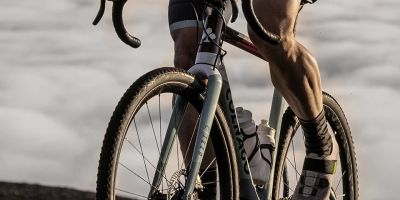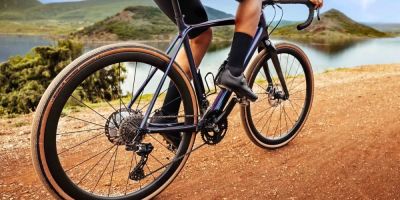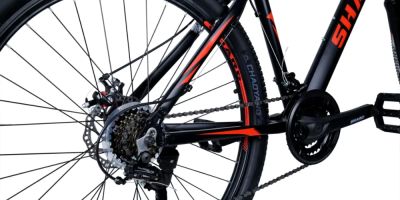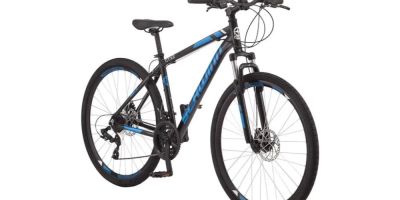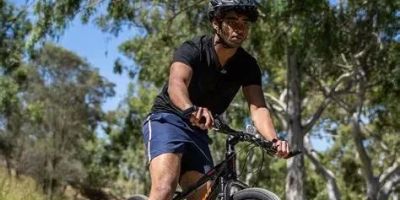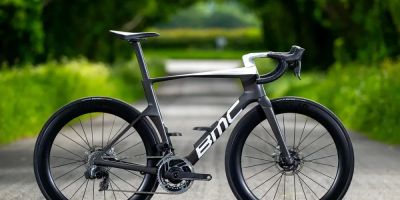- 1-Understanding-Cross-Country-Riding-Needs
- 2-Key-Features-of-the-Best-Cross-Country-Bikes
- 3-Types-of-Bikes-Suited-for-Cross-Country
- 4-Real-Life-Experience-and-Case-Study
- 5-Choosing-the-Right-Bike-Based-on-Terrain-and-Distance
- 6-Maintenance-and-Preparation-for-Cross-Country-Rides
1. Understanding Cross-Country Riding Needs
Cross-country (XC) riding is a popular cycling discipline that combines endurance, speed, and technical off-road challenges across varying terrains. Riders often cover long distances that include climbs, descents, and flat sections, demanding a versatile bike that balances lightweight efficiency with durability.
Knowing your cross-country riding style and goals is crucial in selecting the best bike for cross-country riding. Are you focused on competitive racing, leisure trail rides, or multi-day adventures? Each scenario demands different bike characteristics, from suspension setup to frame geometry. Understanding these needs upfront helps narrow down options and optimize your cycling experience.

Conte's Bike Shop
3449 Wilson Blvd, Arlington, VA 22201, USA
2. Key Features of the Best Cross-Country Bikes
2.1 Lightweight Frame and Responsive Geometry
The ideal cross-country bike features a lightweight frame, often made from aluminum or carbon fiber, to facilitate quick acceleration and easier climbing. Frame geometry influences handling agility and rider comfort over long distances. Most XC bikes have a relatively aggressive stance with a steeper head tube angle to balance stability and responsiveness.

Bicycle Barn LLC
839 Reading Rd, East Earl, PA 17519, USA
2.2 Efficient Suspension Systems
Cross-country terrain varies from smooth dirt paths to rugged rocky trails. Bikes designed for XC riding typically include a front suspension fork with 80-120mm of travel to absorb shocks without sacrificing pedaling efficiency. Full-suspension XC models add rear suspension but remain lightweight to maintain speed and control.
2.3 Reliable Drivetrain and Braking
Performance-driven drivetrains, often 1x setups with a wide gear range, enable riders to tackle steep climbs and rapid descents. Hydraulic disc brakes provide consistent stopping power in all weather conditions, which is essential for safety and confidence on unpredictable trails.
3. Types of Bikes Suited for Cross-Country Riding
3.1 Hardtail Mountain Bikes
Hardtail bikes with front suspension only are popular among XC riders due to their lighter weight, simplicity, and efficient power transfer. They perform excellently on smoother trails and climbs, making them a favorite for racers and endurance riders focused on speed.
3.2 Full-Suspension Cross-Country Bikes
Full-suspension models provide enhanced comfort and control over technical trails and rough descents. Modern XC full-suspension bikes strike a balance between suspension efficiency and weight, offering versatility for mixed-terrain riding and long-distance challenges.
3.3 Gravel and Endurance Bikes
Some cross-country riders prefer gravel bikes, which excel on varied surfaces including dirt roads and light trails. These bikes prioritize comfort, tire clearance, and endurance geometry but may lack the aggressive handling typical of mountain bikes.
4. Real-Life Experience and Case Study
Take the example of Michael, an avid cyclist from Colorado, who transitioned from a standard mountain bike to a specialized XC bike optimized for cross-country riding. His new bike featured a carbon frame and 100mm front suspension, enabling him to tackle challenging mountain trails with greater speed and less fatigue.
Michael’s story highlights how upgrading to the best bike for cross-country riding can transform trail experiences, increase confidence, and open up new possibilities for adventure. His ability to complete longer rides and technical courses improved significantly, supported by expert gear choices and regular maintenance.
5. Choosing the Right Bike Based on Terrain and Distance
5.1 Match Bike Type to Your Typical Terrain
Different cross-country routes require different bikes. If your rides mostly involve smooth trails and climbs, a lightweight hardtail with responsive handling will suffice. For rough, rocky, or root-filled trails, a full-suspension XC bike provides better comfort and control.
5.2 Consider Distance and Riding Style
Long-distance riders prioritize comfort and endurance features, such as relaxed geometry and vibration-damping components. Shorter race-focused riders look for minimal weight and quick handling. Knowing your preferred ride length and pace guides your bike selection.
Healthy Cycling offers extensive resources and personalized recommendations to help you select the best bike for cross-country riding based on your unique preferences and local terrain.
6. Maintenance and Preparation for Cross-Country Rides
Maintaining your cross-country bike is essential for safety and performance. Regularly inspect suspension components, drivetrain cleanliness, and brake functionality. Keeping tires properly inflated and checking frame integrity prevents unexpected breakdowns during rides.
Proper preparation also includes carrying essential repair tools, hydration, and nutrition tailored for endurance. Experienced riders often share maintenance tips and packing strategies in online forums and local cycling clubs, offering valuable insight for newcomers.
By combining the right bike choice with diligent maintenance, you can ensure enjoyable and successful cross-country riding adventures for years to come.

